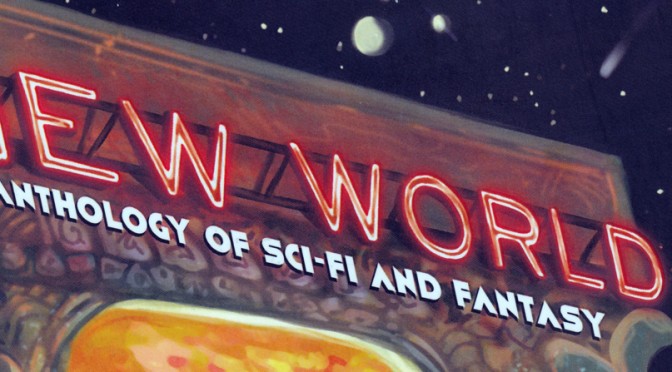First contact stories, with their inherent and explicit contact with The Other, approach the Platonic ideal of Science Fiction. They highlight what we think is true about ourselves (for whatever value of “ourselves” the author cares about) and contrast it with an alien that possesses a critical difference in that dimension. Through the meeting of “us” and “them”, the author then gets to make an assertion about the society in which they live, for better and worse, and then get to stretch their imagination to do all the really fun, skiffy stuff, like determining how their aliens’ different physiological needs presents them with different cultural options.
L. “Iron” Spike Trotman’s publishing company, Iron Circus, whose supercute, lady-produced Smut Peddler porn anthologies and the horror anthology Sleep of Reason have brought humor and humanity to the genres via the first and second chakras, is now expanding upward to the third with New World: An Anthology of Sci-Fi and Fantasy. In it, she anthologizes work by a number of my favorite creators — one of which is Spike, herself, whose comic, Temple, AZ, is a study in alternate-universal humanity that crawls with weirdness.

In her story from this anthology, Impression, Spike’s premise is no less weird (relying as it does on a reveal, I won’t get into details), and is no less human. It’s a meditation on youth and age, on mourning, and above all on mortality as a perhaps necessary part of existence that, for all of its inevitability, is no less tragic for the people involved. That includes, of course, those forced to face their own death and the questions of whether those of us forced to watch others in decline have the right to refuse them that right. As always, Spike’s art is kinetic and cartoony, with a subtle attention paid to facial expressions — one of the best places to demonstrate the powers of the comic medium.
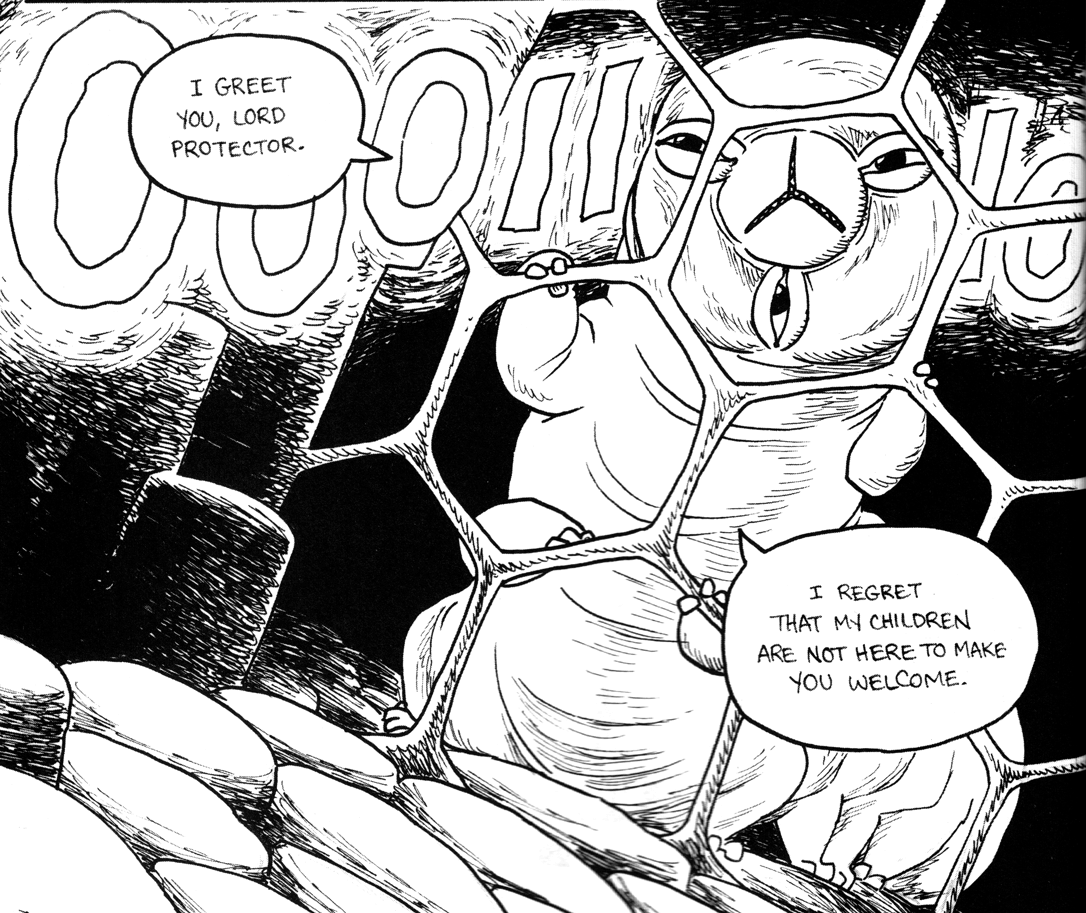
One of the best recurring team-ups I’ve seen in comics is Spike with Carla Speed McNeil. McNeil’s perennial comic, Finder (not to mention some really great Wonder Woman), is at the top of my alltime favorites, dealing as it does with cultural expression in all its forms, from class and race to language and art, to food, literacy, and sexuality. It’s some of the most thoughtful spec fic I’ve ever seen in any medium, rendered in romantic imagery that nonetheless draws heavily on technical observation of architecture, crowds, technologies, and art. In her New Worlds story, Written in Stone, she engages one of my favorite devices: aliens that represent a piece of humanity to such a degree that they become unlike humans. In this case, the external, paternalistic soft empire is one of insects who simply can’t understand the locals’ enthusiastic relationship to their own deaths. Throughout the story, culture shock and linguistic disconnect — normally difficult to express in fiction while maintaining eye contact with the reader — is supplanted by a sound that, while critical to the locals’ understanding of their universe, is completely confounding to the visitors. No amount of goodwill can alter the visitors’ fundamental, physiological disconnect with this element that, while disruptive to their own thought, resides near the base of Maslow’s Pyramid for the local population.
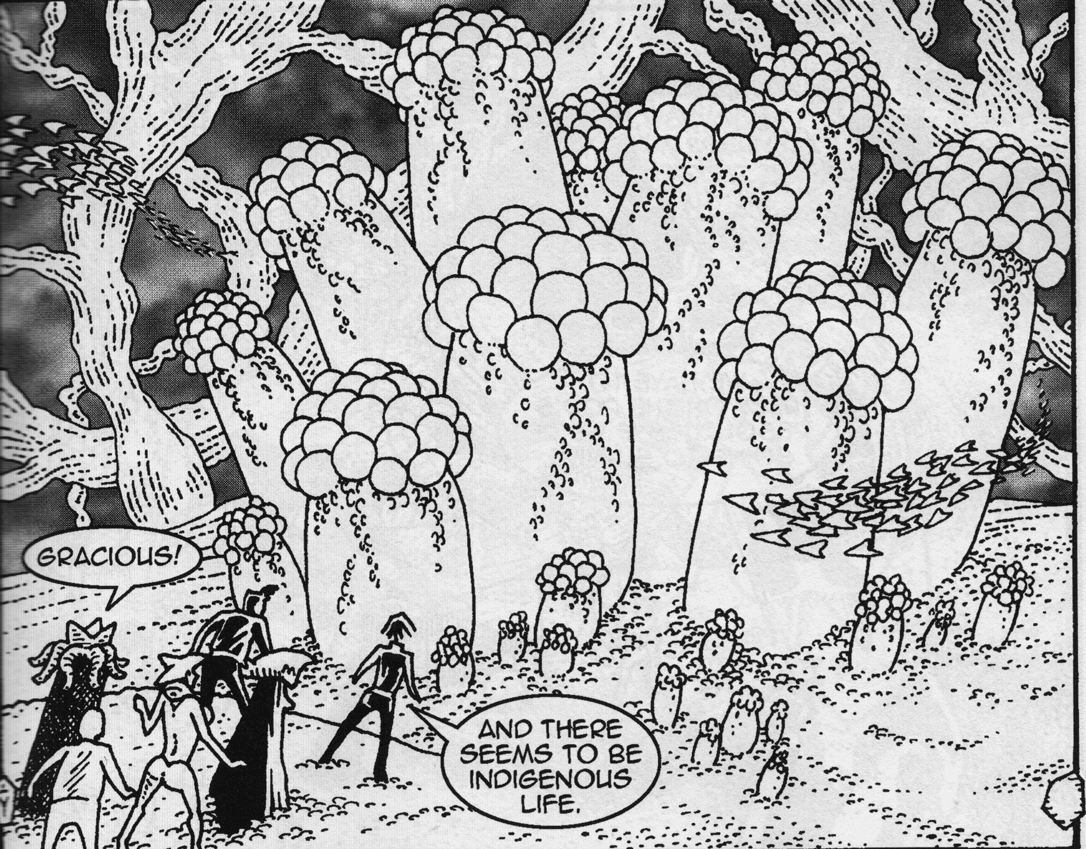
Another favorite comic creator of mine for his longstanding love of totally bizarre aliens is Matt Howarth. His interdimensional experimental musician comic (stated as if that’s a genre. A reviewer can wish, can’t he?), Savage Henry was to me in my teenagerdom what Finder is in my adulthood. His sense of humor, usually subdued in his more straightforward science fiction like his Kief Llama comics, combines the visceral, sophomoric, and petty aspects of humanity with grand weirdnesses. Kief typically finds herself dealing with venal officials and free market nobility on the one hand, and billion-year-old, hyperintelligent gas giants on the other. In his New World story, Stranded in E, he uses a shipboard disaster to drive characters, all recognizably human (even those with lines like “Do not rush me! I have many legs but they are all tiny!”), into a conflict of interests of the most base kind. His love of geometric anatomy and line weight give his audience room to laugh at his characters’ pettiness, but also give the space a feeling of solidity.
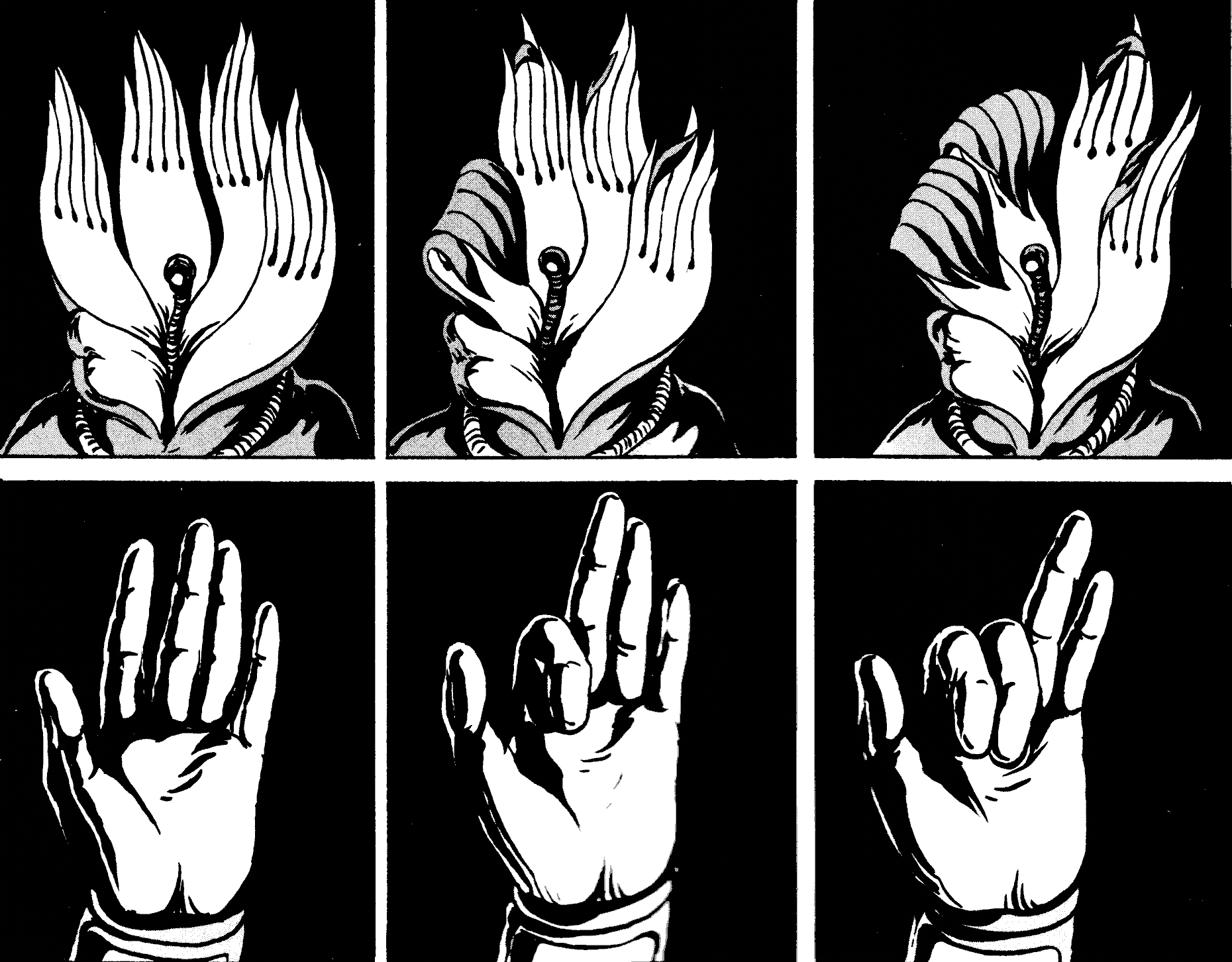
With an equal passion for finding the humanity in aliens and the alienness in humanity is Evan Dahm and his contribution, The Quiet World. Evan is an extraordinarily prolific creator, having in the last couple of years completed his multiple masterworks of an illustrated edition of Moby Dick, his surreal quest fantasy Rice Boy, his illustrated edition of The Wizard of Oz, and his epic, Vattu. I bet he’s done even more, I dunno. I literally can’t keep up with his creations. The Quiet World (a title that perhaps refers to Jaques-Yves Cousteau’s famous undersea documentary, The Silent World) is a tale of a lost explorer whose steely resolve and explorer’s flexibility gives her the strength to find her way home. It’s gorgeous, with Dahm’s dreamy-but-anatomical drawing style giving the story a Dalí-like surrealism, as though one were living inside a painting and still had to find food and shelter.

Those alone would be worth the cover price. But New World keeps giving, with 24 stories in all. Zach Wienersmith‘s clever and philosophical writing is substantiated by Blue Delliquanti‘s warm illustration of a story about religion in An Experimental Colony. Ben Jelter‘s Incubation tells a joke about identity with gorgeously illustrated speculative biology and funny writing. Meg Gandy gives us a world and its cultures that stand proud next to Carla Speed McNeil’s, in a story about family and obligation between cultures. Worlds are revealed to be hollowed-out asteroids. The goofiest of Warner Bros. aliens critically analyze the culture of the reader. Kaiju find themselves tangled up in a noir mystery about racism. Each story is a gem in this tightly edited necklace.
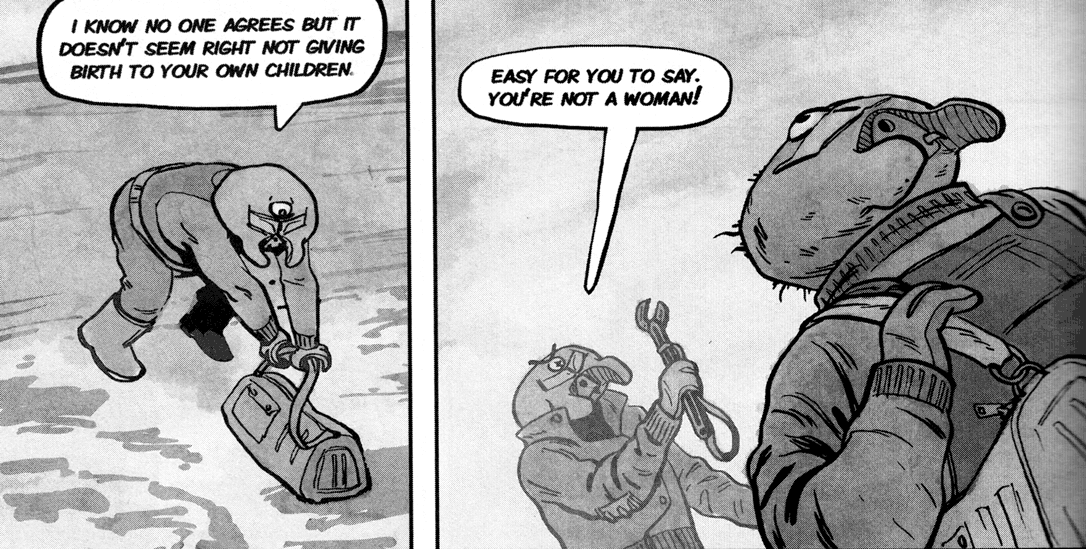
The weakest parts of the anthology still qualifies as a slightly clouded gem at worst. Some stories feel rushed, or their premises are simple in contrast with their neighboring masters of the medium (though some of the masters could have used one more round of editing, too). Some suffer from an incorrect black point, making the art feel distant and foggy when the drawing itself is really vibrant. But man, as a big fan of weird, black & white 90s sci fi comics like Fringe, God’s Hammer, Love & Rockets, pretty much anything by The Pander Bros., and the œuvre of Howarth, the production here still stands out to me at the high end of competent.
New World is an extremely enjoyable anthology and I hope it presages an ongoing series by Iron Spike, as Smut Peddler has. I’ve long wished for comics full of beautiful, thoughtful science fiction, and this is scratching an itch I haven’t been able to reach since PLANΣΤΣS.
It’s $30, which is a buck and a quarter per story. Why are you still here?
